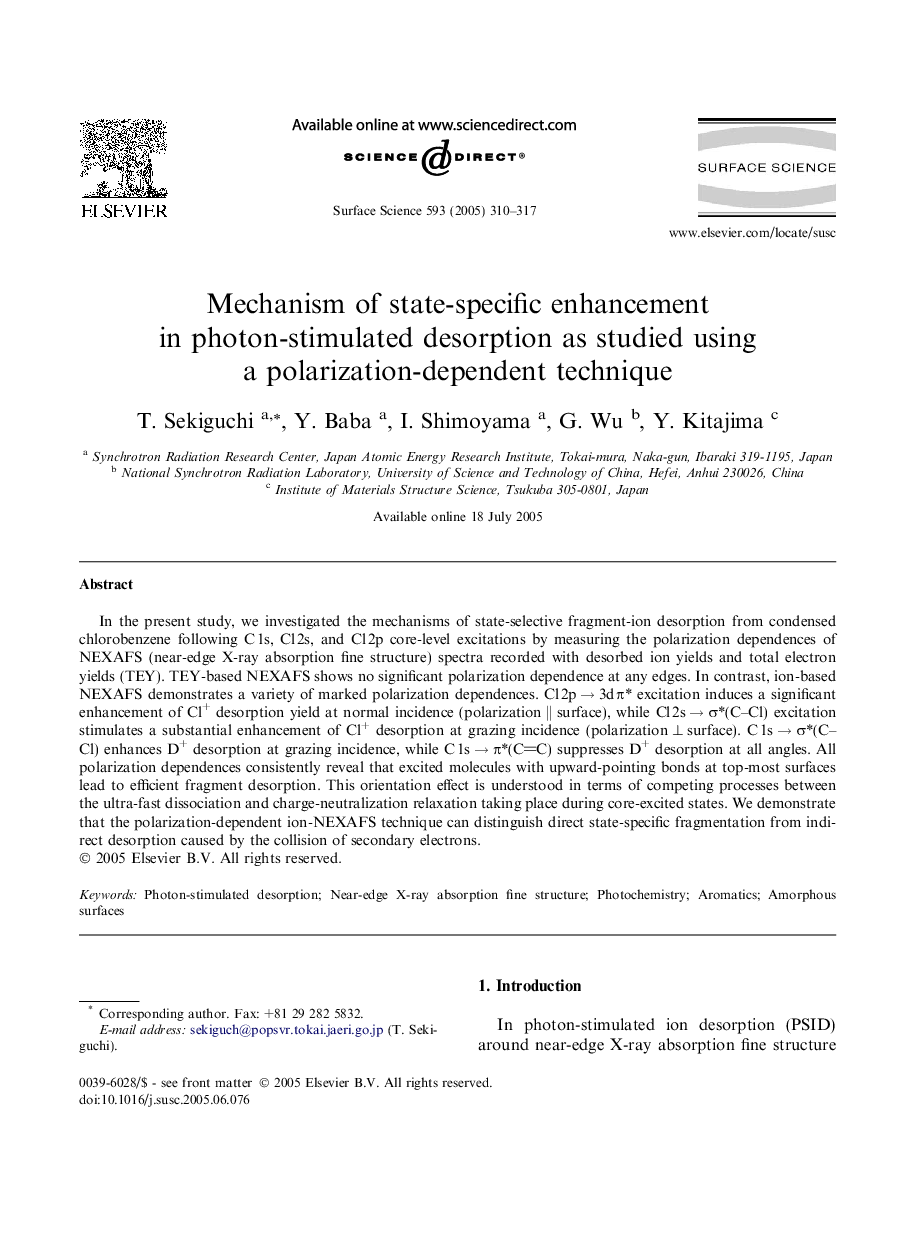| Article ID | Journal | Published Year | Pages | File Type |
|---|---|---|---|---|
| 9595111 | Surface Science | 2005 | 8 Pages |
Abstract
In the present study, we investigated the mechanisms of state-selective fragment-ion desorption from condensed chlorobenzene following C 1s, Cl 2s, and Cl 2p core-level excitations by measuring the polarization dependences of NEXAFS (near-edge X-ray absorption fine structure) spectra recorded with desorbed ion yields and total electron yields (TEY). TEY-based NEXAFS shows no significant polarization dependence at any edges. In contrast, ion-based NEXAFS demonstrates a variety of marked polarization dependences. Cl 2p â 3d Ï* excitation induces a significant enhancement of Cl+ desorption yield at normal incidence (polarization â¥Â surface), while Cl 2s â Ï*(C-Cl) excitation stimulates a substantial enhancement of Cl+ desorption at grazing incidence (polarization â¥Â surface). C 1s â Ï*(C-Cl) enhances D+ desorption at grazing incidence, while C 1s â Ï*(CC) suppresses D+ desorption at all angles. All polarization dependences consistently reveal that excited molecules with upward-pointing bonds at top-most surfaces lead to efficient fragment desorption. This orientation effect is understood in terms of competing processes between the ultra-fast dissociation and charge-neutralization relaxation taking place during core-excited states. We demonstrate that the polarization-dependent ion-NEXAFS technique can distinguish direct state-specific fragmentation from indirect desorption caused by the collision of secondary electrons.
Keywords
Related Topics
Physical Sciences and Engineering
Chemistry
Physical and Theoretical Chemistry
Authors
T. Sekiguchi, Y. Baba, I. Shimoyama, G. Wu, Y. Kitajima,
